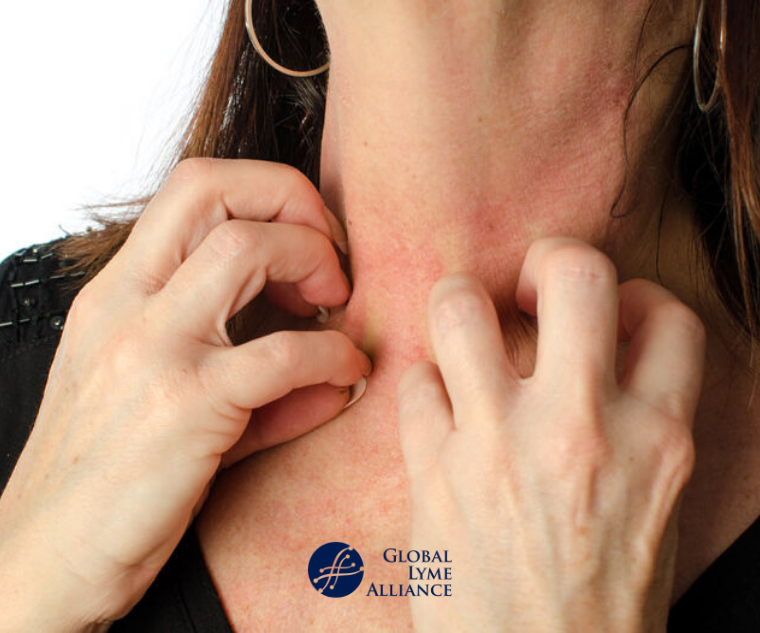Understanding the Mission of the Lymecare Alliance for Lyme Campaigning For
Wiki Article
Lyme Condition Understanding Month-- Discover How to Shield Yourself
April is marked as Lyme Disease Recognition Month, serving as a necessary pointer of the value of understanding and preventing this progressively common tick-borne ailment. As we explore the subtleties of Lyme disease, it becomes clear that recognition is not just concerning information; it is concerning taking significant activity to safeguard ourselves and our areas.Understanding Lyme Disease
Recognizing Lyme Condition starts with recognizing its origins and transmission. This contagious illness is primarily created by the microorganism Borrelia burgdorferi, which is transferred to humans through the bite of contaminated black-legged ticks, generally referred to as deer ticks. These ticks flourish in verdant and woody locations, making exterior tasks a potential threat for exposure.The lifecycle of the tick is important to comprehending just how Lyme Disease spreads (Lymecare Alliance). Normally, the ticks start feeding in the larval phase, frequently obtaining the germs from little animals, such as deer or rats. As they create into fairies or adults, they can after that transmit the bacterium to larger hosts, including human beings

Recognizing Symptoms Early
Early acknowledgment of Lyme Condition signs is vital for efficient treatment and healing. Lyme Disease, transmitted largely via the bite of contaminated black-legged ticks, can result in severe complications otherwise addressed without delay. The first signs and symptoms frequently show up within three to thirty days following a tick bite and may consist of high temperature, chills, fatigue, muscle and joint pains, and inflamed lymph nodes.One of the characteristic indications of Lyme Illness is the characteristic erythema migrans breakout, which looks like a "bull's- eye" pattern and generally arises at the website of the tick bite. This rash might not appear in every instance, making it necessary to stay alert about various other symptoms.
People who have actually been in locations where Lyme Disease is native should be cautious and monitor their health carefully after possible exposure. Awareness and education and learning regarding these very early indicators are important in combating the effect of Lyme Condition.
Reliable Avoidance Techniques
Preventing Lyme Illness needs an aggressive technique, particularly for people who frequent areas where ticks are prevalent. Understanding efficient prevention strategies is crucial in reducing exposure to these disease-carrying arachnids.First, it is important to wear appropriate clothing when in tick-infested atmospheres. Long sleeves, long pants, and closed-toe footwear can significantly reduce skin direct exposure. Think about treating clothing with permethrin, a bug spray that remains effective via multiple laundries.
Additionally, using a tick repellent having a minimum of 20% DEET to subjected skin can better protect versus bites. Routinely looking for ticks after exterior activities is crucial; perform extensive body evaluations, specifically in cozy, wet areas such as behind the knees and within the hairline.
Creating a tick-safe setting around your home is additionally beneficial. Maintain your yard well-maintained by trimming the lawn consistently, eliminating leaf trash, and developing barriers of crushed rock or wood chips to different woody locations from leisure rooms.
What to Do After a Bite
Right away after a tick bite, it is vital to take swift action to lessen the threat of Lyme Condition transmission. Draw upwards with steady, even pressure; do not snag the tick or turn, as this might trigger components to break off and stay in the skin.Screen the bite website for indications of infection, such as inflammation, swelling, or a breakout. It is vital my sources to be vigilant for symptoms of Lyme Disease, which might consist of high temperature, cools, tiredness, and joint discomfort, commonly appearing within three to 1 month resource post-bite. If you observe a particular "bull's- eye" rash or experience any of these symptoms, look for medical attention quickly.
Inform your healthcare service provider of the tick bite, especially if the tick was attached for greater than 24-hour or was engorged. Early treatment is important in stopping the beginning of Lyme Disease and ensuring reliable treatment if required.
Resources for Additional Information
Recognizing the steps to take after a tick bite is important, yet so is having accessibility to dependable sources for continuous education concerning Lyme Illness. Numerous companies provide thorough info to aid individuals stay educated regarding prevention, signs, and therapy choices.The Centers for Disease Control and Prevention (CDC) offers a riches of sources, including standards on tick avoidance and info on Lyme Disease stats. Their website is an essential beginning point for any person seeking expertise about the illness's influence and how to alleviate risks.
One more important source is the Lyme Disease Organization, which concentrates on research, advocacy, and education and learning (Lymecare Alliance). Their platform features write-ups, webinars, and updates on the current scientific findings, making it an essential device for both patients and health care experts
In Addition, the American Lyme Condition Foundation supplies instructional products customized for various audiences, including caretakers and outdoor enthusiasts. They likewise host neighborhood events that advertise awareness and prevention strategies.
For those seeking support, organizations like the Tick-Borne Disease Alliance offer resources for getting in touch with neighborhood support system and accessing patient-centered care. Utilizing these resources can empower individuals to protect themselves and their communities efficiently.
Conclusion

The lifecycle of the tick is critical to comprehending how Lyme Illness spreads (Lymecare Alliance).The risk of Lyme Condition increases throughout warmer months when ticks are most active, especially in regions where the illness is endemic, such as the Northeast, Midwest, and components of read this article the West Coastline of the United States. Lyme Disease, transferred largely with the bite of contaminated black-legged ticks, can lead to severe issues if not addressed without delay.Right away after a tick bite, it is important to take speedy action to lessen the risk of Lyme Illness transmission. Understanding Lyme illness, identifying its signs, and applying effective prevention strategies can significantly minimize the threat of infection
Report this wiki page